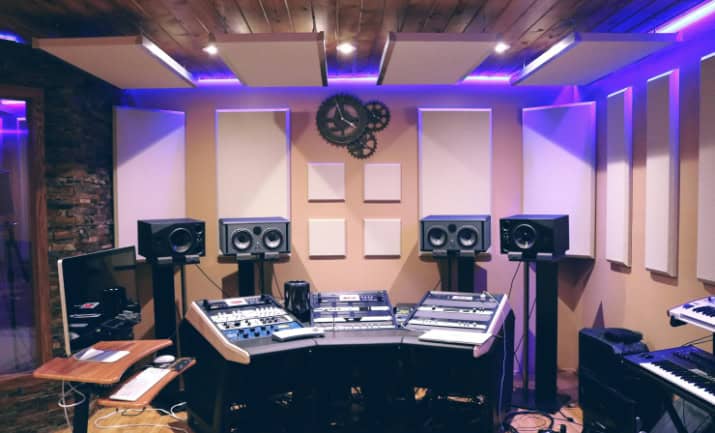Jump to:
Bringing music to your garden is easier than you might think, and a shed can be the perfect environment for it. But to play or record music solo, jam with your band, or do your choir practice without getting complaints from neighbours, you’ll need to amp it up. This guide will help you do just that, along with a few tips for putting together your new outdoor retreat!
Soundproof Your Garden Room

Acoustically sound insulation provides good soundproofing, which is the main element of a garden music room. This allows you to practise your music as late as you want, whether it’s 2:30 in the afternoon or any time you choose, all in peace. How’s that sound?
Got a shed with thin walls? You can still make it work by adding soundproofing materials to the floor, walls, and ceiling. For instance, you could use 30mm of Rockwool and 5mm of isolated rubber for the floors. 50mm of Rockwool or anti-echo foam pads and 15mm of blue sound block plasterboard can work well for the walls. On the ceiling, add 50mm of Rockwool acoustic fibre board. You can do it yourself or let an expert handle the job.
Alternatively, a tongue and groove shed with 15mm to 20mm cladding often comes insulated. The extra thickness creates more space for air to be trapped between the layers, acting as insulation. This feature is especially worth considering if you plan to invest in a new unit soon.
The thicker the cladding, the better it blocks outside noise; the thicker the floor, the better it can support heavy instruments! For the safest option, look for a garden log cabin.
Tune It Up with Electricity
A good electrical setup powers all your equipment and sets the mood for your music sessions. This means the wiring, sockets, and switches should meet the power requirements of your devices, such as amplifiers, speakers, mixing consoles, and instruments. It’s also a clever idea to add extras for future additions, like extra lighting. So, plan the electrical system to accommodate those changes. This will save you a lot of hassle in the long run.
Tips: Get a professional electrician if you’re not confident with electrical work. You’ll also find it useful to check out this guide: Top 5 Questions to Consider Before Installing Garden Building Electricity
Garden Music Studio Decor
To make a wooden cabin the best music room it can be, consider painting it. Light shades such as white, light grey, or misty blue can be a great choice for the walls and ceiling. Those colours will set the mood perfectly for some heavenly choir singing and piano playing. If it’s a heavy metal band which is going to be practising, maybe dark greys and reds will set the tone. Ultimately, try to choose a colour scheme that will fit the vibe of your music.
For the wall decorations, consider stencil painting some musical symbols such as treble clefs, notes, sharps and flats. Or perhaps hang your favourite song lyrics in a frame. Better yet, design a banner with your music group’s official logo.
Set up a Garden Recording Studio

Now that you’ve got your electricity sorted, it’s time to set up your equipment and instruments in their proper places. It could be something like this: your computer or mixing console takes up the centre part of your music shed room. The speakers are positioned side by side, away from the walls and corners. This setup can help improve sound quality and give you a better listening experience.
You can also organise everything by function. For instance, keep all your guitars, bases, and drums in one area and your audio equipment in another. But be sure to leave space to move around. There should be enough room so you and your guests won’t feel cramped while playing or recording.
Pair overhead indoor lighting with wall-mounted fixtures to get even coverage around your work area and instruments. Warm LEDs are easier on the eyes, too—perfect for long practice sessions. And don’t forget to add your personal touches to make your music room feel inspiring and inviting. If you have the space, why not add a small couch or bean bags on a nice rug to have a relaxing spot during breaks?
Consider these tips, and you’ll have a space where you can turn up the volume and keep the peace. And feel free to decorate the rest however you like!
Up next on your reading list: How to Soundproof a Shed – The Ultimate Guide





